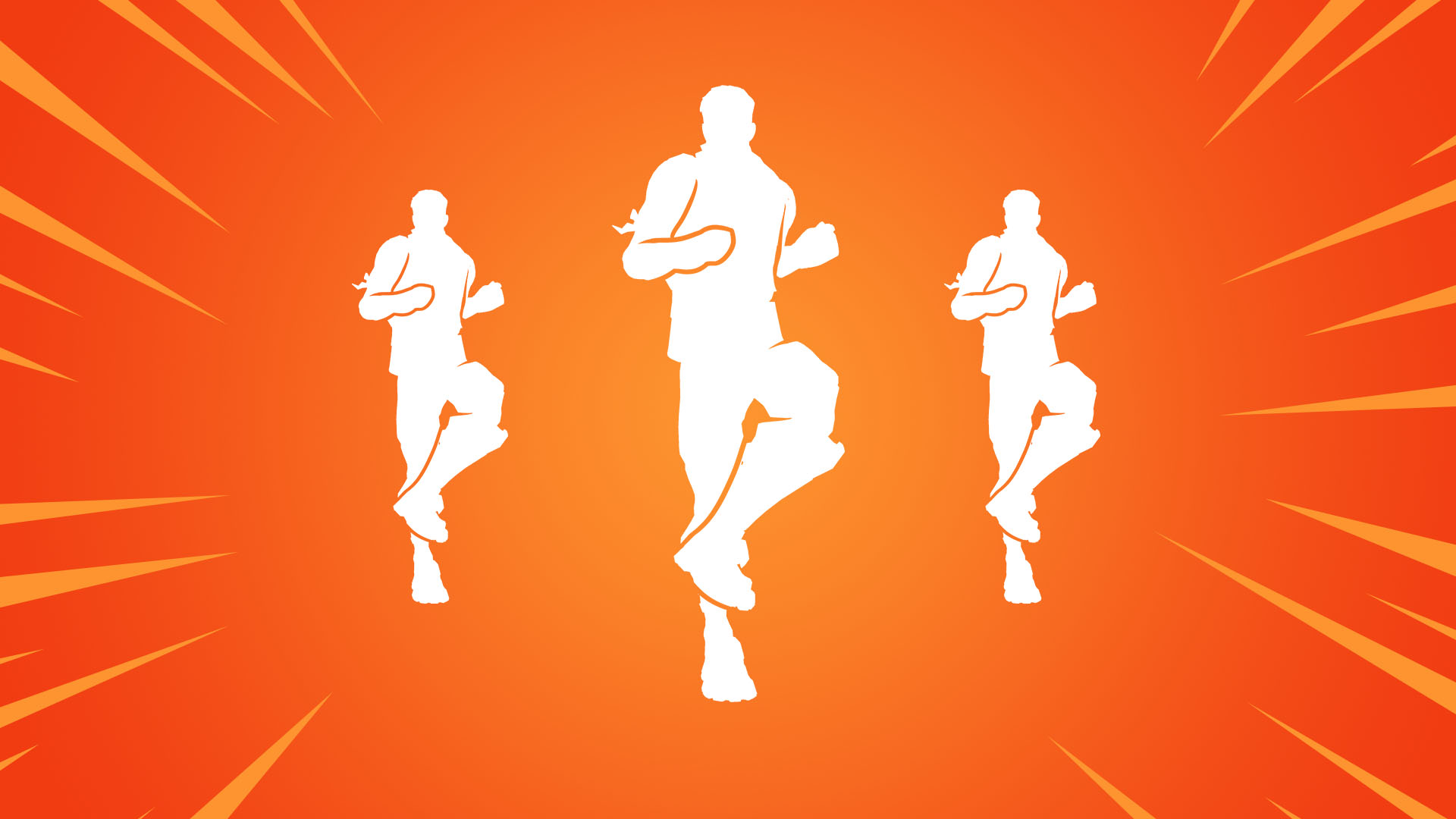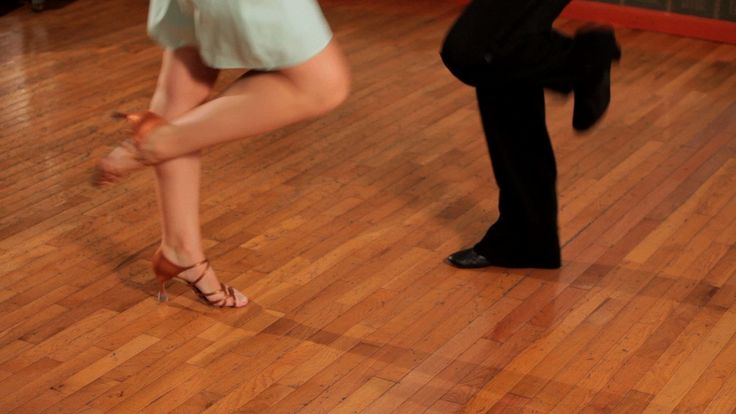How to make a dance choreography
10 Tips From the Pros
Creating movement from scratch to encompass the feeling, rhythm, and theme of a song takes a little imagination and some work, whether you're a beginner or getting ready for a big performance. When you're including the movements and dance phrases for multiple performers, too, choreographing a dance can get quite complicated. That's why we're giving you some top pro tips on how to choreograph a dance when you're feeling stuck, including methods you can use to step outside the box and spice up your routine.
1. Study the Music
If you know what music you want to choreograph your dance to, start studying. Go beyond creating movements based on the rhythm and beat of the song, and study the lyrics, the emotion, and the meaning behind the song. You can find inspiration from the feelings you get when you read the words, and embrace the emotion the artist puts into the song.
Poppin' C, a Swiss popping dancer, says, "The music is everything for me, because the way my body adapts and moves, is because of the way I feel the music. " By knowing every part of your music inside and out, you can design dance moves that really work with the beat and lyrics.
B-boy Junior holds a breaking workshop at Red Bull BC One Camp in Mumbai
© Ali Bharmal / Red Bull Content Pool
2. Watch the Pros
Take some time to watch dance-heavy musicals, like "Chicago" and "Anything Goes," competitive series like "World of Dance," and even street performers, like Logistx, to grab some inspiration for your moves. Observe the styles, transitions, and combinations of movements and note how pro dancers create a physical connection to the music. This can help motivate you to create dances that get the audience to connect with your physical interpretations of the music.
3. Plan for Audience and Venue
Think about who your performance or event is for. Consider the venue you're performing at, too, because your dance environment can help you find ways to creatively express emotion. Lighting, sound, and the overall ambiance of your venue can help you design dances that incorporate mood and emotion to connect with the audience during your performance.
4. Think About Dance Style
Choreograph with steps and dance moves that reflect a specific style. You might try incorporating hip hop steps into a classical dance to mix it up and create your own unique dance style, for example. If you're just starting out with dance choreography, try focusing on learning how to balance a specific style of dance with your unique interpretation of the music you're dancing to.
Kid David poses for a portrait at Red Bull Dance Your Style USA Finals
© Carlo Cruz/Red Bull Content Pool
5. Focus on the Basic Elements
Focus on one (or several) of the most basic elements of dance: shape, form, space, time, and energy. For form, you can focus on designing phrases and steps based on a specific form from nature, like an animal or landform. Use your stage space to showcase explosive energy and give certain aspects of your performance a punch of emotion that keeps your audience engaged.
6. Don't Start at the Beginning
If you're stuck trying to figure out how to start your dance, plan it out from the middle or from the end.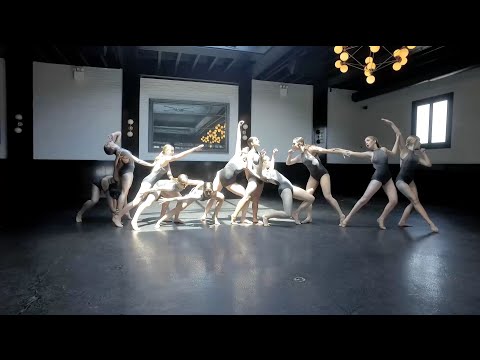 Tell a story through your dance choreography and plan out the climatic elements before the small steps to help you flesh out where you want to go with your ideas. Once you've outlined the basic structure of your choreography, piece it together into an entire work.
Tell a story through your dance choreography and plan out the climatic elements before the small steps to help you flesh out where you want to go with your ideas. Once you've outlined the basic structure of your choreography, piece it together into an entire work.
7. Try Choreographing Without Music
Dance in silence. It might seem like a crazy idea since you're choreographing the dance to a specific song. However, just letting your body move and flow with different tunes you imagine can help you step outside your comfort zone and incorporate challenging moves and dance steps that you might not have thought to pair with a song or score. When you discover something you like, pair it with other steps you've already developed and start fitting your moves to the music.
Poppin C shows off his moves during a photoshoot in Lausanne
© Torvioll Jashari / Red Bull Content Pool
8. Embrace Post-Modernism
Study early modern dance forms and styles that can get your imagination flowing. Dancers from the mid-century modern era through the 1950s and '60s (such as Anna Halprin, one of post-modern dance's pioneers) would incorporate a whole world of nontraditional moves in their choreography. Slow walking, vocals, and even common gestures can make imaginative additions to your overall work.
Dancers from the mid-century modern era through the 1950s and '60s (such as Anna Halprin, one of post-modern dance's pioneers) would incorporate a whole world of nontraditional moves in their choreography. Slow walking, vocals, and even common gestures can make imaginative additions to your overall work.
9. Incorporate the Classics
Use classical ballet, traditional ballroom steps, or other classic dance moves to mix up your style. It can be a startling transition for an audience to see a classical ballet step snapped in between freestyle phrases. Combining classical techniques with your dance design can add interest and suspense to your performances.
10. Use Other Art Forms as Inspiration
Don't just focus on music and dance. Look at all kinds of art forms, from two-dimensional paintings to live art performances. Take note of the different emotions and use of space, shapes, and forms that different artworks incorporate, and think about your interpretations and how you can convey that in movement. Use this as fuel for your inspiration when choreographing short phrases. Keep up to date on new forms of art to get inspired and avoid the dreaded writer's block (for dancers).
Use this as fuel for your inspiration when choreographing short phrases. Keep up to date on new forms of art to get inspired and avoid the dreaded writer's block (for dancers).
More Pro Tips to Choreograph a Dance
Arlene Phillips CBE, a British choreographer and theater director, got her start pro dancing and choreographing in the 1970s. She's been the choreographer for a variety of performances over the years, including live theater. Her advice for aspiring dancers includes some helpful choreographing tips:
Tell the music's story through your movements
Keep practicing with imaginative steps
Be determined to learn from your mistakes
Challenge yourself with unique rhythms, styles, and techniques
Plan out your most impactful elements then work in additional steps around those
Keep practicing your choreographing techniques
Don't be afraid to learn something new
One of the most important things to keep in mind when choreographing a dance, though, is to embrace diversity.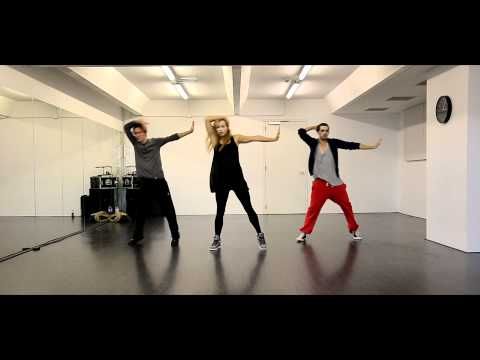 Don't be afraid to do something different or outside the norm. Try incorporating new styles or steps to make your dance fresh, and study all types of art to get excited about your work. The more you challenge yourself to think outside the box, the more creative and unique you can be with your choreography.
Don't be afraid to do something different or outside the norm. Try incorporating new styles or steps to make your dance fresh, and study all types of art to get excited about your work. The more you challenge yourself to think outside the box, the more creative and unique you can be with your choreography.
15 Ideas To Help You Make Amazing Dance Choreography
There's no formula for making a supa hot fire piece, but there are dance choreography tips and tricks you can use to help make the process a lot smoother.
Here are some 15 choreography tips that'll help you make the best piece you can!
1. Focus on one sectionHone in on the section that you can see that perfect move or combo and branch out from there.
Or, break up the choreography into pieces (known as 'chunking') and just choreograph a little bit every day.
2. Budget your timeGive yourself a set schedule to choreograph – like a full week with two hour intervals.
Don't just say "I'll choreograph later" every day and expect the piece to magically make itself.
3. Understand the music
Understand the song completely. The lyrics, meaning, beats, etc. I find myself stuck a lot when I would rush to choreograph to a song I barley listened to. But when I choreograph to a song that I connect with or know very well, my movements are more natural and carefree.
– Gina Hong
4. Do you
Be yourself! Don't focus on what's cool, but more on what feels good to you. The purpose of choreographing is to show your art and creativity.
– Devin Pornel
5. Collaborate with others
Working with other people to create a piece is one of my favorite things to do.You’ll be surprised by what you can learn from another person’s creative process.
– David Lee
6. Tell YOUR story
Don't choreograph to impress other people, do it to share a story. YOUR story.
– Tracy Seiler
7. Do weird moves
When you get stuck choreographing, try 'weird' moves- moves that make your body feel uncomfortable- or 'funny' moves- moves that help you get out of your head by just having fun with it. This allows your mind to create things that are new and creative. Keep changing up and that constant, somewhat dragging flow and you'll be surprised with what comes out of you.
– Michelle Shim
8. Be a character
What helps me most whenever I make a piece is I develop a character in my head. I give myself a reason, a motive, a feeling behind the piece.This will help you connect to the song and find some emotional attachment to your performance.
– Jaime Soriano
9. Trust yourself
Believe in your own abilities. Your very own, strictly organic, self-proclaimed abilities. A lot of us tend to have choreography blocks because we are investing too much time into what a piece should look like (based off of what we've seen from other choreographers), than what it should genuinely feel like.
– Mitch Villareal
10. Don't use videos as a reference
Watching videos is a great way to get inspired, but don’t just use them as a reference for moves.
Or else you'll just end up making a piece that's a patchwork of everyone else's choreo, rather than your own.
11. Dance to a different layer in the music
If you get stuck on the original pathway you were planning to follow, try highlighting a different layer in the music.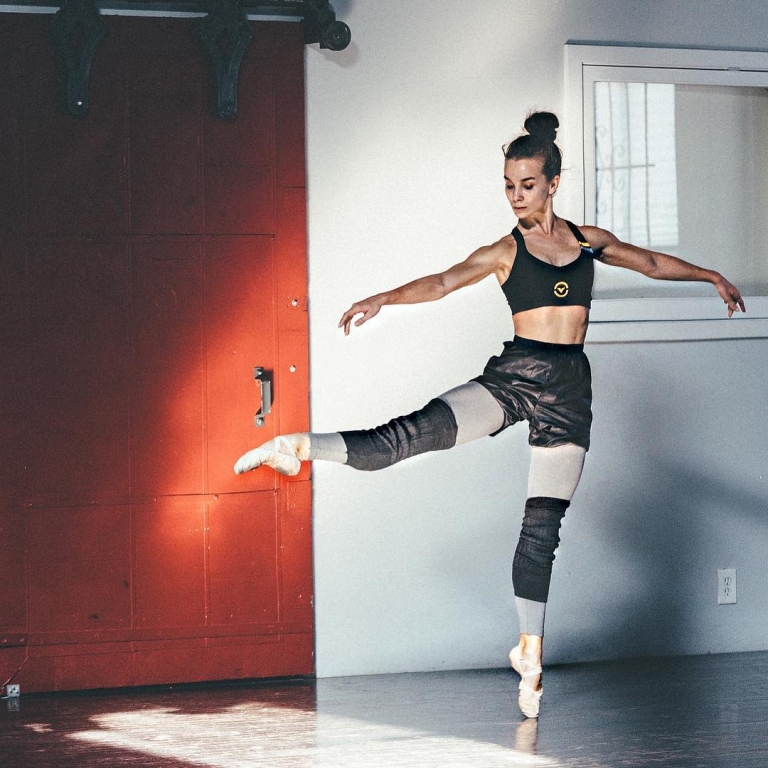
For example, forget the bass! What are the lyrics saying? How about the pitch?
Moving to different sounds will also help make your piece look more dynamic and less predictable.
12. Don't hit every single beat
Instead of moving to the most sounds, choose the right sounds. Be picky with the specific sound you want to follow.
You can groove through the rest or just have a moment in stillness, or milking the end of the last move.
Breathing through some sounds helps the audience (and your body) absorb a crazy sequence before or after that chill phase, and lifts some pressure off of the dance choreography process.
13. Utilize concepts to think of unique moves
Invent new moves based off of concepts. The potential for concept-based choreography is limitless, because your thoughts and ideas are limitless.
Just think of a word (or have someone give you one), and let that be your intention. You'll never run out of movement this way.
14. Take a break
Sometimes... the flow needs to pick up on its own. Instead of forcing it, take a break from your earphones and the mirror.
Do something else that'll refresh your mind and soul in a different way. Take a walk! Meditate! Watch a movie!
15. Watch this video when you hit choreo block
These 4 tips will help you get through that block!
We hope these dance choreography tips help! Can't wait to see the pieces you come up with.
Take class with your favorite choreographers to expand your vocabulary of movement and better understand how to piece moves together.
Sign up for STEEZY Studio and start learning!
Dance photography - the nuances of shooting, the secrets of success, polishing skills
Dance photography is an expression of the beauty of movement and emotions.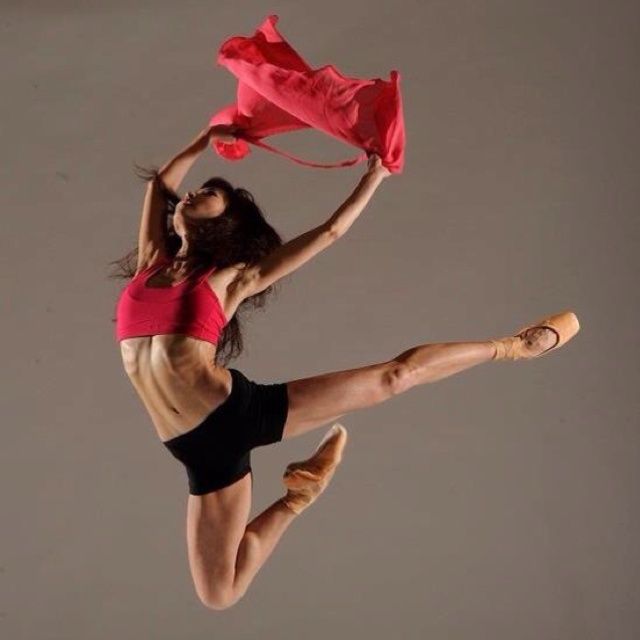 Dance can be a source of great shots, but it's no secret that photographing dancers is very difficult: framing, focusing and releasing the shutter at the right moment - absolutely everything must be done, and at the same time with the best exposure in the available light. For Bernie Ng, one of Singapore's most prolific dance photographers, shooting choreography involves not only capturing the action, but also the aesthetics and emotion that permeates the movement. She shares some tips for capturing dramatic shots of dancers.
Dance can be a source of great shots, but it's no secret that photographing dancers is very difficult: framing, focusing and releasing the shutter at the right moment - absolutely everything must be done, and at the same time with the best exposure in the available light. For Bernie Ng, one of Singapore's most prolific dance photographers, shooting choreography involves not only capturing the action, but also the aesthetics and emotion that permeates the movement. She shares some tips for capturing dramatic shots of dancers.
EOS 5D Mark III / EF24-70mm f / 2.8L II USM / Manual exposure (f / 2.8, 1/250 s) / ISO 2500 / WB: Auto. "Pure" by T.H.E Dance Company (2016) / Choreography: Kuik Swee Boon / Dancers: Anthea Seah & Wu Mi
- Exposure
Getting the exposure right is probably the most difficult aspect of dance photography . Since flash photography is generally not allowed indoors, you should do your best with the available lighting, which will vary from one show to the next.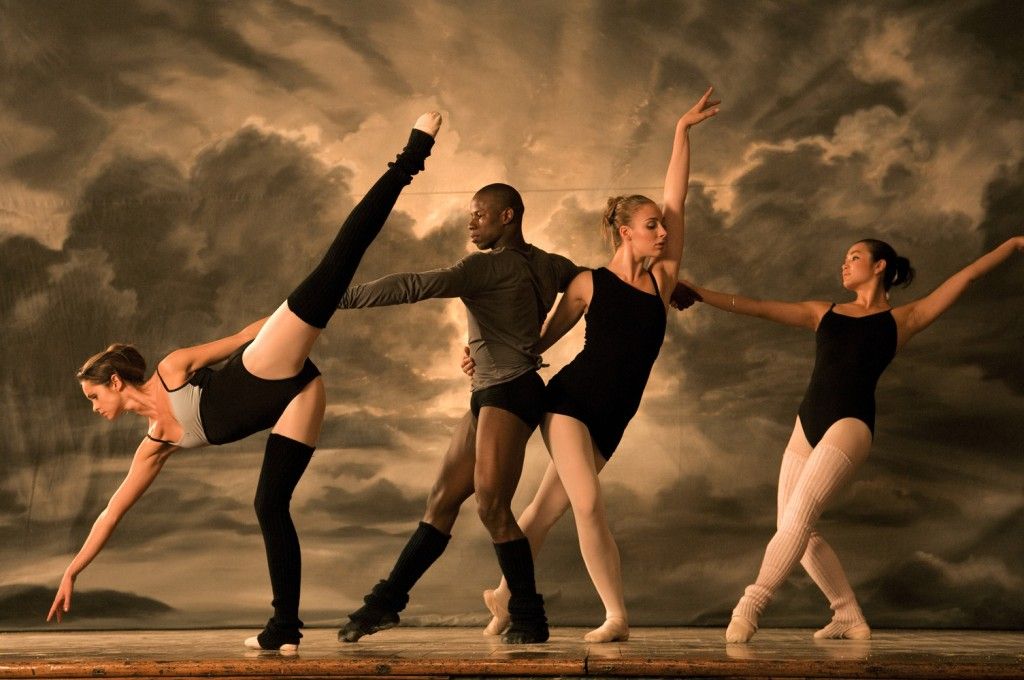
Use fast lenses
This will allow enough light to reach the camera sensor so you can keep the ISO sensitivity as low as possible to minimize visible noise. Ideally, your camera kit should include both a wide-angle lens for capturing the entire scene and a telephoto lens for close-ups.
Shoot in manual mode or use exposure compensation in Av or Tv mode
The action in the scene (and hence the shooting conditions) can change very quickly, so you'll need to keep control of your exposure settings. Bernie prefers to shoot in manual mode to fine-tune the camera. But if you choose to use semi-auto, she advises using compensation to get the right exposure.
For beginners, aperture-priority (Av) mode will probably be easier to use: you just need to set the maximum aperture and the camera will give you the fastest possible exposure without underexposure. Shutter priority mode (Tv) gives you control over shutter speed, but it can be a little more difficult for an inexperienced photographer to get an adequate exposure.
Shutter speed. Know what you need
Consider factors such as dance style, choreography, and the type of shoot you want. Bernie's shutter speed is 1/250 second, which she adjusts as needed. For example, she may decide to use a slow shutter if she feels it is necessary for the image.
EOS 5D Mark III / EF24-105mm f / 4L IS USM / Manual exposure (f / 4.0, 1/13 s) / ISO 800 / WB: Auto. "Giving" by Frontier Danceland (2015) / Choreography: Adrian Skjoldborg
Using a slow shutter speed can add momentum to a photo and bring the whole composition to life. In the shot above, you can see that the photographer chose to use a slow shutter speed to create some motion blur while keeping the dancer in focus. This filled in the empty spaces and added movement to the image.
Pro Tip: If you have access to a stage crew and lighting designer... about the upcoming show. Bernie usually asks what the lighting will be like.
Creative ideas: stroboscopic lighting can be a great opportunity!
EOS 5D Mark III / EF70-200mm f/4L IS USM / Manual exposure (f/4, 1.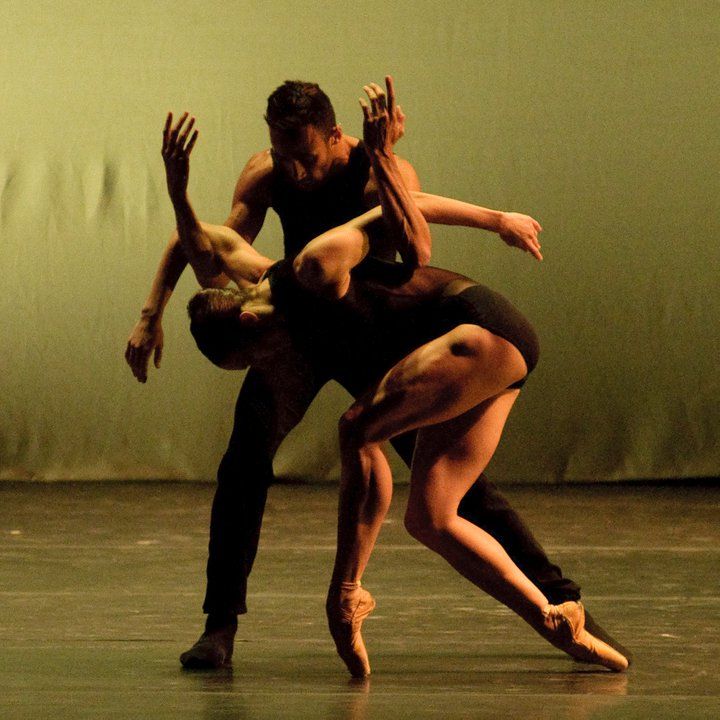 3s) / ISO 320 / WB: Auto. "Planet Romeo" / Presented at DiverCity as part of the M1 Contact Contemporary Dance Festival (2015) / Choreographer and Dancer: Daniel Kok
3s) / ISO 320 / WB: Auto. "Planet Romeo" / Presented at DiverCity as part of the M1 Contact Contemporary Dance Festival (2015) / Choreographer and Dancer: Daniel Kok
Some shows use stroboscopic lighting, which can cause you to miss many moments if you're not ready. However, if you prepare and react quickly enough, this can be an opportunity to get creative. For the shot you see above, Bernie made a quick decision to slow down the shutter and get a strobe effect.
- Dance is more than just action
EOS 5D Mark III / EF24-105mm f / 4L IS USM / Manual exposure (f / 4, 1/400 sec) / ISO 12800 / WB: Auto. "The Ordinary Man" by T.H.E Dance Company (2014) presented by Huayi - China Arts Festival, Esplanade - Theaters in the Bay / Choreography: Wu Yi-San & Kuik Swee Boon
A lot of people think about snapshots in a jump at the mention of dance photography, but quiet moments can be just as dramatic.
Your photography will definitely be influenced by:
- beautiful lines and correct poses
Find out which ones work well and which don't.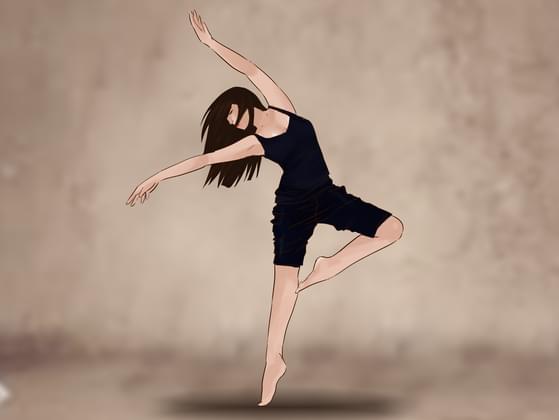 They can be different for different dance genres. However, you don't have to have a dance background to take decent shots - basically it all comes down to a well-developed sense of aesthetics. Make the dancers look good in the frame.
They can be different for different dance genres. However, you don't have to have a dance background to take decent shots - basically it all comes down to a well-developed sense of aesthetics. Make the dancers look good in the frame.
- dancers' faces
A big part of dance is conveying thoughts and feelings to the audience, so Bernie tries to capture the emotions and facial expressions of the performers. This is exactly the moment when it is useful to know what the choreography really is before you shoot! The intriguing facial expressions of the dancers above reflect the comedic nature of the choreography. Take those shots where the dancers blink or their eyes are empty and unfocused (unless it's part of the choreography) and mercilessly throw them in the trash.
Pro Tip: Be sensitive to the shots you take
Remember that your camera can capture things that the human eye cannot see: pressing the shutter button will inevitably take pictures that may not be the most flattering for dancers.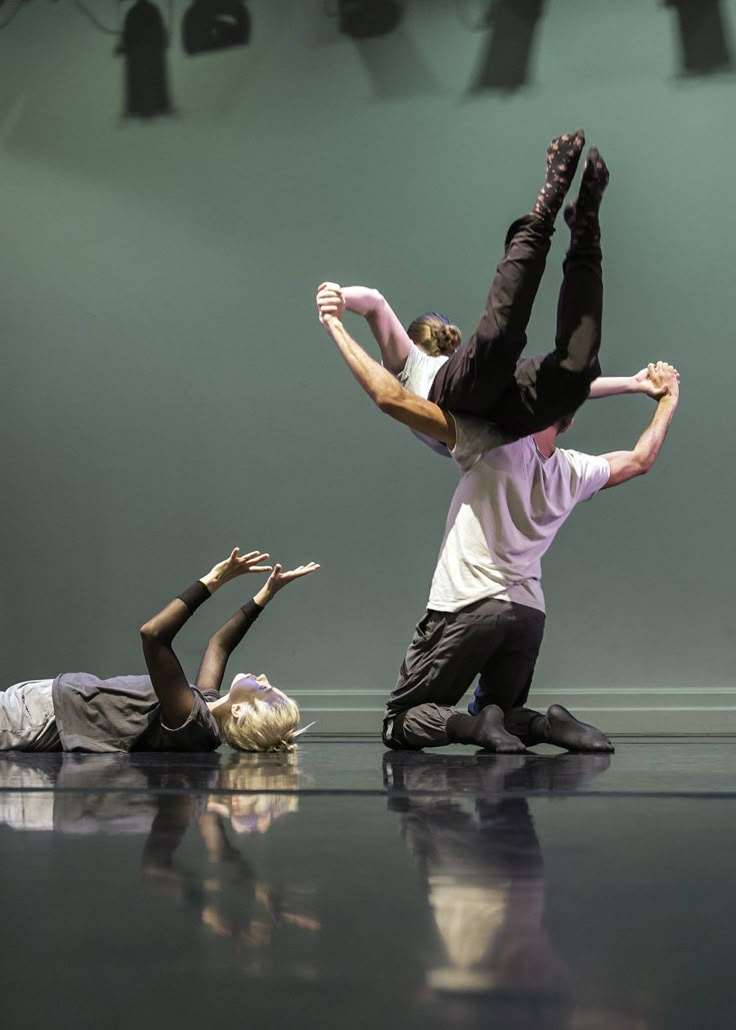 Be very careful and careful when choosing the final set of shots (if you are an invited photographer and completed an order). Get permission from a particular dancer or company if necessary, especially if you share images on social media, a website, or wherever.
Be very careful and careful when choosing the final set of shots (if you are an invited photographer and completed an order). Get permission from a particular dancer or company if necessary, especially if you share images on social media, a website, or wherever.
Dance photos don't have to include the entire body of the dancer!
EOS 5D Mark III / EF24-70mm f/2.8L II USM / Manual exposure (f/2.8, 1/100s) / ISO 400 / WB: Auto. Pallavi in Time by Chowk Productions (2017) / Choreography: Raka Maitra
Close-ups of the dancers' faces or other details of the mise-en-scene can also create memorable shots.
"The legs were very important to this choreography," Bernie recalls of the above shot. She wanted to get closer to the ankle bracelets of the dancers. The photo turned out to be successful also because the lighting was also focused on the legs.
Bonus: if you really want to capture the jump…
EOS 5D Mark III / EF24-105mm f / 4L IS USM / Manual exposure (f / 4, 1/250 sec) / ISO 5000 / WB : Auto.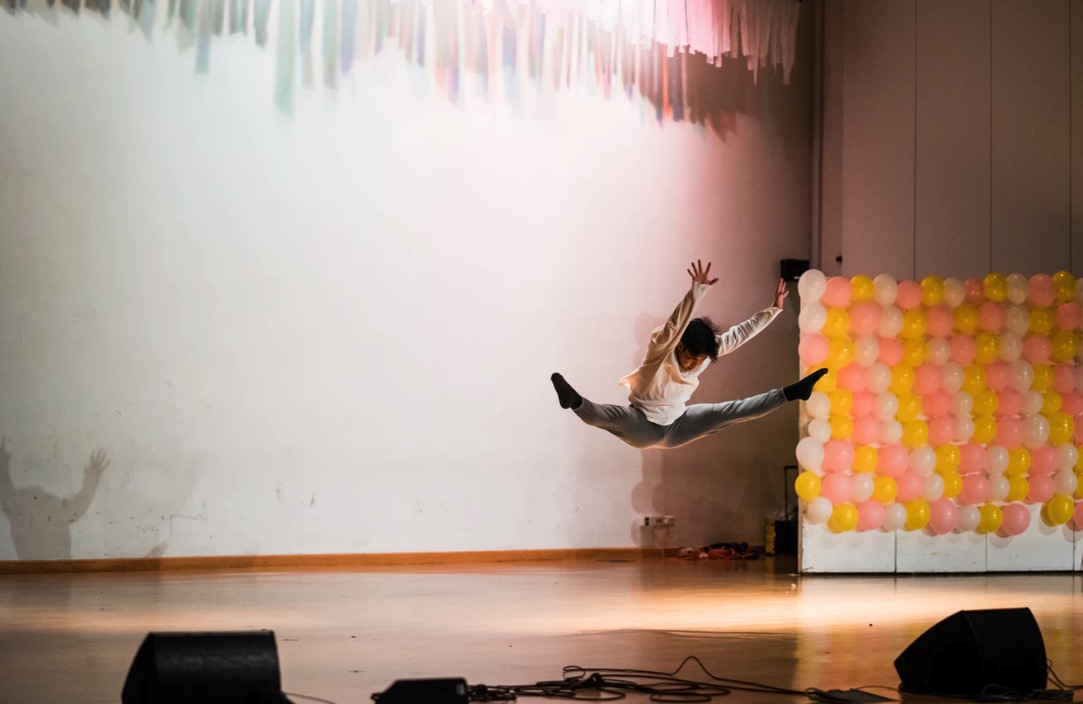 "Schubert Symphony" Singapore Dance Theater (2016) / Choreography: Chu-San-Go
"Schubert Symphony" Singapore Dance Theater (2016) / Choreography: Chu-San-Go
The most important thing in pictures of dancers in a jump is the exact time: "If you see a jump, you are already too late." To get the timing right, the photographer advises not to rely too much on continuous shooting. Instead, learn when to press the shutter button. Sometimes you can tell from the music at what point the dancers are getting ready to jump. It will probably take a lot of trial and error, but it will only improve your photography skills.
Other noteworthy parts
- You will need to react very quickly.
As mentioned above, things obviously move quickly on stage and you have to anticipate the moments and react almost instinctively to get the shots you want. What will help?
- - The presence of a fast and "responsive" camera.
- - Good knowledge of the functions of your camera and its configuration at the level of intuition.
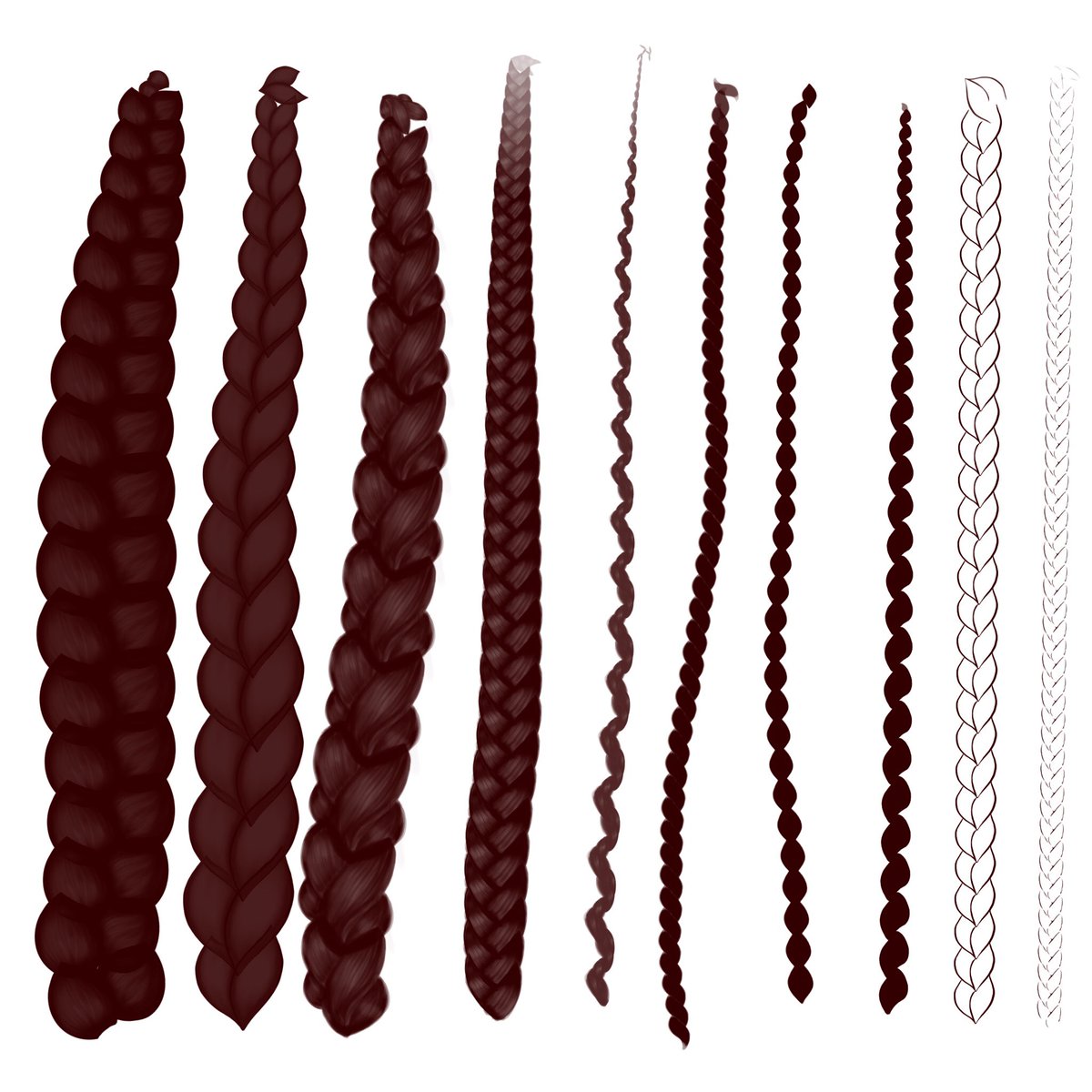 Customize your own shortcut buttons.
Customize your own shortcut buttons. - - If you focus with the back button. This makes shooting more efficient because you don't have to refocus every time you press the shutter button.
- - A lot of practice helps you think faster.
- - If you watch a lot of dancing, even outside of filming. This will help you familiarize yourself with the timing of the shutter release and aesthetics. In addition, it is easier to evaluate the dance when you see it with your own eyes, and not through the lens!
- Respect who is on stage and respect the audience.
It's easy to get carried away here, but be aware of both the audience and the dancers on stage.
YES!
- - Take pictures only when allowed.
- - Turn off red light autofocus.
- - Turn off your flash.
NOT…
- - Get too close to the dancers. This can be quite distracting if you (or your huge telephoto lens) intrude into their space, especially since they will have heightened spatial awareness as they dance.

- - Make it difficult for the audience to see.
- Last but not least, respect the dancers.
The dancers work very hard to perfect their art, and without them you wouldn't have your photos.
- - Think about how they would like to look in the frame. Show them in the best light, and make their efforts worthwhile.
- - Never forget to credit the dancers and choreographers on your photos when you post them on your social media profile.
- - Create your connection to your object. Watch more dances or even take choreography classes! Your increasing appreciation of your subject may be reflected in the pictures you take.
The career of dancers is short. Your photographs of performing on stage in the dance element may be the only record of these precious moments, so try to take pictures that will bring joy to people and bring back fond memories.
Features of choreography
There are many different dance styles that differ from each other in tempo, rhythm, mood and many other features. However, the basis of all dances without exception is choreography. In choreography classes, children learn to perceive music correctly and combine it with their movements, acquire basic skills of grace and plasticity, strengthen their health, both physical and mental.
However, the basis of all dances without exception is choreography. In choreography classes, children learn to perceive music correctly and combine it with their movements, acquire basic skills of grace and plasticity, strengthen their health, both physical and mental.
Choreography for toddlers is presented in an accessible and entertaining way; for older children, classes have a more complex structure. In these lessons, children perform exercises aimed at the harmonious development of all muscle groups. In addition to strengthening health and acquiring a beautiful body, choreography lessons also correct character. Whims, uncertainty, excessive shyness are eliminated and responsibility and self-organization, self-confidence and self-confidence are acquired. In addition, being engaged with other children, the child develops his communication skills.
Choreography lessons consist of three main components:
- Elements of classical dance.
- Improvisation.

- Ballet gymnastics.
Choreography lessons give the basic skills that form the basis of all dances without exception, they teach you to move correctly and feel the music. By combining dance lessons with choreography lessons, you can achieve maximum effectiveness and efficiency. Or later, serious classical choreography classes can develop into professional activities when a child enters a ballet school and devotes all his time to the chosen business.
The basis of choreography classes is classical dance, which helps to understand all the subtleties of dance art, learn how to move correctly and harmoniously and feel the music. Classes are held at the choreographic barre, and skills are reinforced by regular training. Such lessons develop flexibility, endurance, coordination in children, strengthen muscles and the musculoskeletal system, form a general culture of movements and allow you to perform any dance movements beautifully and confidently.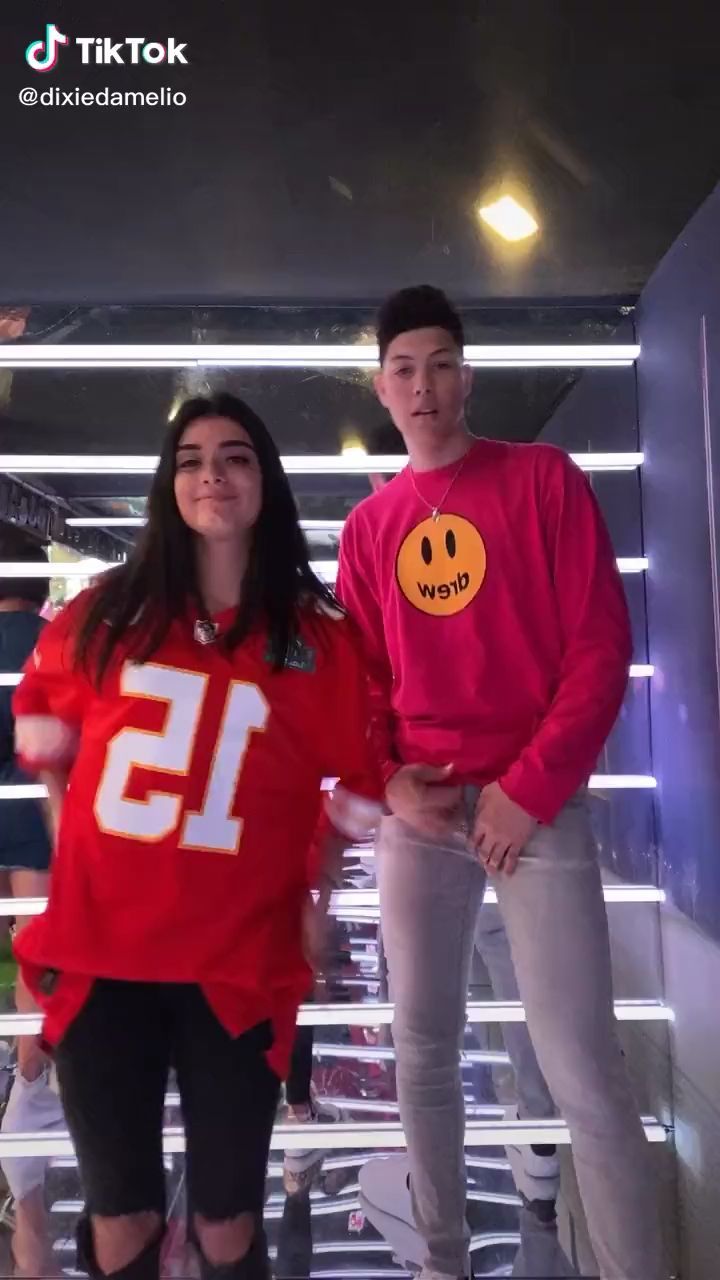 Classes in classical dance form a beautiful, even posture, correct mild cases of curvature of the spine, develop muscles and eversion of the legs, elasticity of the feet. At the lessons, children learn to position their hands and head, acquire the ability to properly hold the body, correctly distributing weight on their legs, thereby training stability and agility and acquiring a toned, beautiful figure. In training, the rhythm of movements develops, the ability to move along with the rhythm of the music, maintaining its different tempo.
Classes in classical dance form a beautiful, even posture, correct mild cases of curvature of the spine, develop muscles and eversion of the legs, elasticity of the feet. At the lessons, children learn to position their hands and head, acquire the ability to properly hold the body, correctly distributing weight on their legs, thereby training stability and agility and acquiring a toned, beautiful figure. In training, the rhythm of movements develops, the ability to move along with the rhythm of the music, maintaining its different tempo.
In addition to elements of classical dance, improvisation is an important component of choreography lessons. In addition to teaching dance technique, children are taught the ability to fantasize and experiment while performing a dance, not being afraid to go beyond the rules and norms. The ability to improvise is to dance confidently, avoiding memorized schemes, connections and combinations. However, at the same time, any improvisation is based on the technique of classical dance in order to look organically with each other. Technique and improvisation should complement each other, harmonize and combine, otherwise improvisational moments will look unprofessional and inappropriate.
Technique and improvisation should complement each other, harmonize and combine, otherwise improvisational moments will look unprofessional and inappropriate.
Using the acquired skills, the dancer is able to liberate his movements and body in general, diversifying the dance pattern and making it more interesting and exciting. Properly constructed improvisation can enrich the dance and make it more spectacular. The skills acquired in the lessons greatly develop fantasy and imagination, stimulate abstract thinking.
An equally important part of the lessons is ballet gymnastics - a comprehensive exercise program aimed at strengthening muscles, correcting posture, acquiring body tone, developing grace and harmony of movements. Ballet gymnastics includes many exercises aimed at developing all parts of the body. Separate exercises strengthen the back and align the posture, develop and strengthen the press, help turnout and prevent flat feet. This complex helps to get a beautiful, slender figure, improve health and improve well-being, and given the fact that training takes place without any exercise equipment and weight lifting, excessive stress on the spine and joints is eliminated. All types of exercises are performed on the floor and thereby relieve the load from the back, allowing you to focus on working out certain muscle groups. Regular training helps to acquire a good stretch and developed strong muscles.
This complex helps to get a beautiful, slender figure, improve health and improve well-being, and given the fact that training takes place without any exercise equipment and weight lifting, excessive stress on the spine and joints is eliminated. All types of exercises are performed on the floor and thereby relieve the load from the back, allowing you to focus on working out certain muscle groups. Regular training helps to acquire a good stretch and developed strong muscles.
Choreography lessons give the basic skills that form the basis of all dances without exception, they teach you how to move and feel the music. By combining dance lessons with choreography lessons, you can achieve maximum effectiveness and efficiency. Or later, serious classes in classical choreography can develop into professional activities when a child enters a ballet school and devotes all his time to the chosen business. If you want to see your child fit, beautiful, healthy and successful, choreography lessons are what you need!
Comfortable conditions
Your choice is in favor of our dance and sports school!
We have 3 modern dance halls, separate locker rooms, waiting area
Free classes
Free trial class for EACH direction.